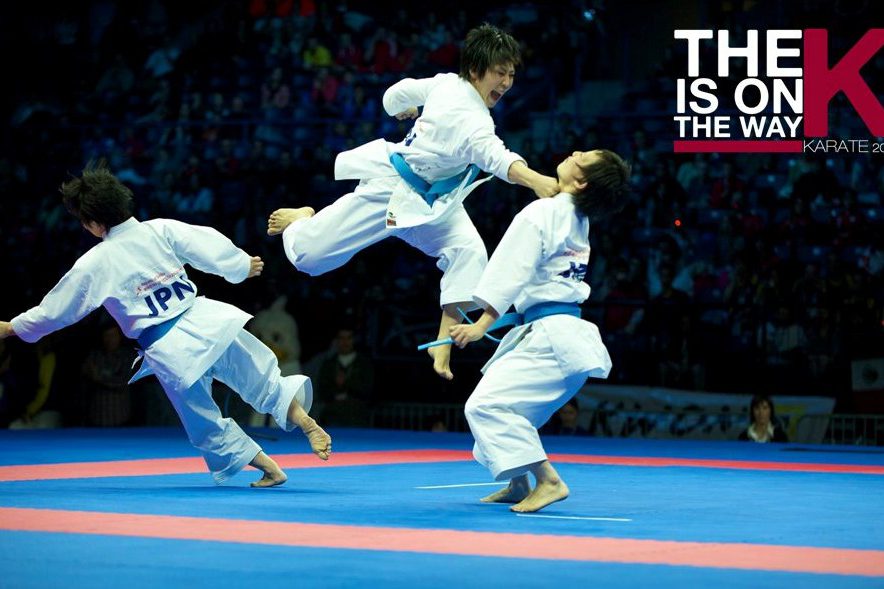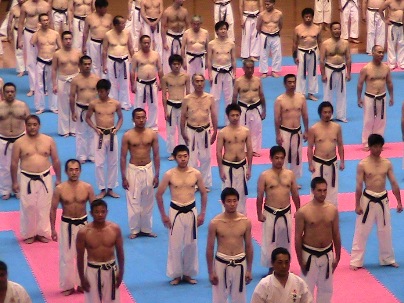In most Karate-schools, the training involves some kind of physical strength exercises.
This can vary quite a bit from school to school, but often it’s centered around variations of sit-ups, push-ups and high-jumps, either in the end or beginning of the training. With or without a partner.
These three exercises (sit-up/push/up/high-jump) are often chosen because they work the three muscle groups that you use the most: arms, stomach and legs. And that is great. But there is one thing you really should consider when training strength:
How many repetitions should you do?
When we have kids training, we do maybe a maximum of 10 repetitions of a movement, for example the push-up. There is no need to do more than that, because they don’t have the muscles necessary, and they’ll not get those muscles from doing it anyway, since they have a few years left to puberty (thank heaven for that). So it’s basically for fun, mental toughness and to learn correct technique (for the future) that we do it.
Over to the adult group. And this is where it gets interesting.
We all know that they shouldn’t do only 10 push-ups, like the kids, correct? They are bigger and stronger! They can do 50, or hundreds or until they throw up! It’s only good for them! Their arms should feel like french fries when they’re done… right?
Or should they actually only do 10, like the kids?
I think so.
To know why, you only need a little basic knowledge of strength training. The most important point is this:
There exists basically two types of muscle fibers (actually three). The first type is short and explosive, and the second type is long and slow. Hence, they are commonly referred to as fast twitch and slow twitch.
In Karate, which do we want? Low twitch is good for marathon running, or a long wrestling match.
But Karate is the opposite. In my opinion we want to do short bursts of powerful moves. At least it looks that way when you see someone perform Karate-moves. This means we want fast twitch muscle fibre, and should train to avoid the other type of muscle fibre (the long twitch). Because a muscle can only consist of a certain amount of fibers, it’s really important how you train these. Your training decides how many percent of your muscle is fast twitch or low twitch.
Now let’s go back to the push-up. If you do pushups until you pass out, you train slow-twitch muscle fibers in your arms, and in the future your punches will be slower. The good side is that you will be able to do more punches before your arms get tired. Your stamina in the arms will increase.
Good for you.
However, if you do, let’s say, 10 push-ups, but explosive, and still feeling fresh afterwards, you will eventually get faster punches. The downside is that you won’t be able to do as many punches before you get tired in your arms. But the punches you do will be fast, strong and crisp.
Good for you!
Do you now understand the difference? Slow twitch fibers give you stamina, not explosiveness. Fast twitch gives you explosiveness, but not so good stamina (actually, the power drop [decrease in power] is the same for fast and slow twitch muscles during the first 15 seconds of a movement. After that, it drops more rapidly in fast muscles.).
So the conclusion is: If you want your students (or yourself, your neighbour, uncle, dog or anyone) to be more explosive, skip the traditional two hundred sit-ups and do less, but more explosive. The same goes for all exercises. This is the way to improve your Karate using strength training.
On the other hand, if you once in a while want your students to feel like they have really trained hard for their money, let them do two hundred!
It’s good for their mental toughness too!
And they will feel good the following morning!



5 Comments